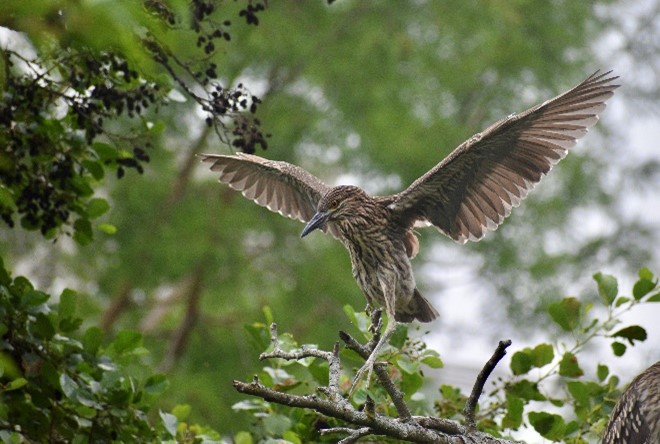
Background
Black-crowned night-herons (BCNH) are a colonial wading bird that historically nested throughout the state of Illinois. Unfortunately, due to breeding habitat degradation and destruction, they have been listed as endangered in the state since 1977. At this point, the only known black-crowned night-heron rookery in the state of Illinois is located at the Lincoln Park Zoo. To address these conservation concerns, the Ward Lab has partnered with Illinois Audubon, Bird Conservation Network, biologists from the Illinois Department of Natural Resources and the Lincoln Park Zoo Urban Wildlife Institute to study BCNH movement, behavior, and health to better understand this species’ urban habitat use and identify new potential rookery sites to support the continued existence of this species in Illinois.
Conspecific Attraction
Although this remaining rookery appears to be doing well, it still faces many threats to its survival. In addition to the dangers posed by fishing line, traffic, human harassment, extreme weather, and urban pollution, the limited number of suitable nesting trees at the Zoo diminish each year, and overcrowding puts the birds at higher risk of disease outbreaks. The Ward Lab hopes to encourage some birds to establish additional breeding colonies through a method called “conspecific attraction,” which relies on the tendency of wading birds to spend time near others of their species and has been used successfully in other avian conservation programs. In 2023, the we identified and built sites near two historical rookery hotspots, Big Marsh in Calumet and St. Louis Metroeast. We fastened painted heron “decoys” to suitable nesting trees in the areas and played BCNH and other heron vocalizations throughout the breeding season during the hours the birds are most active with the hopes that the presence of other BCNH would attract some birds to start breeding in these protected, natural areas.
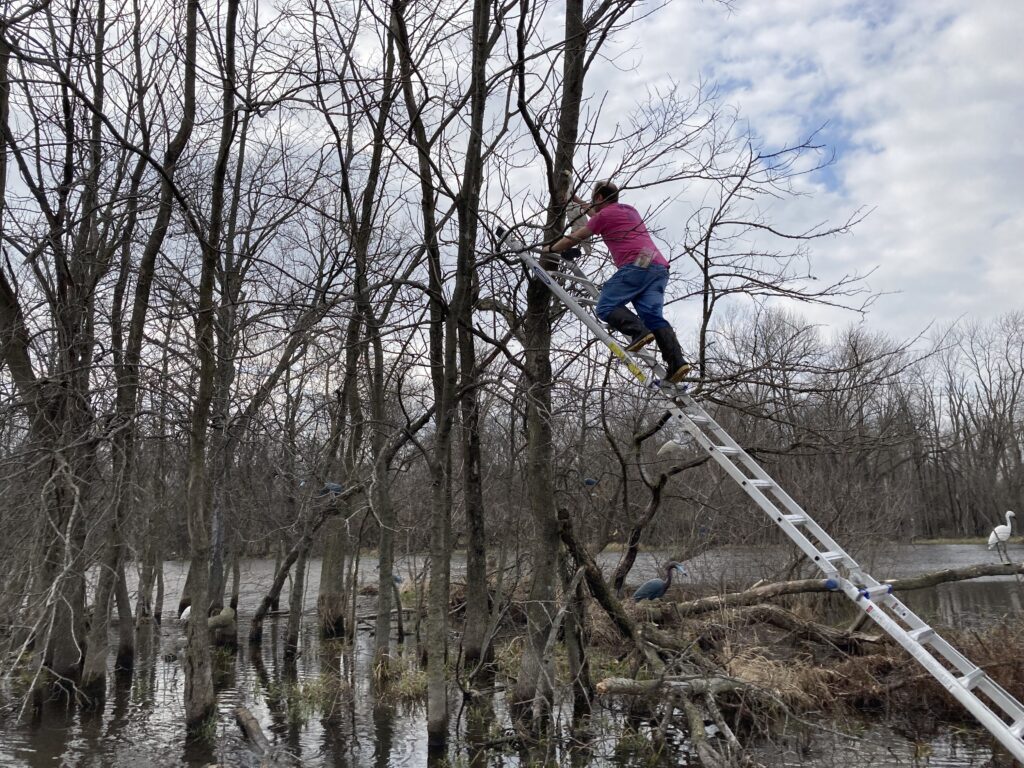
Mike Avara places a decoy in a tree at Cahokia Mounds State Historic Site. 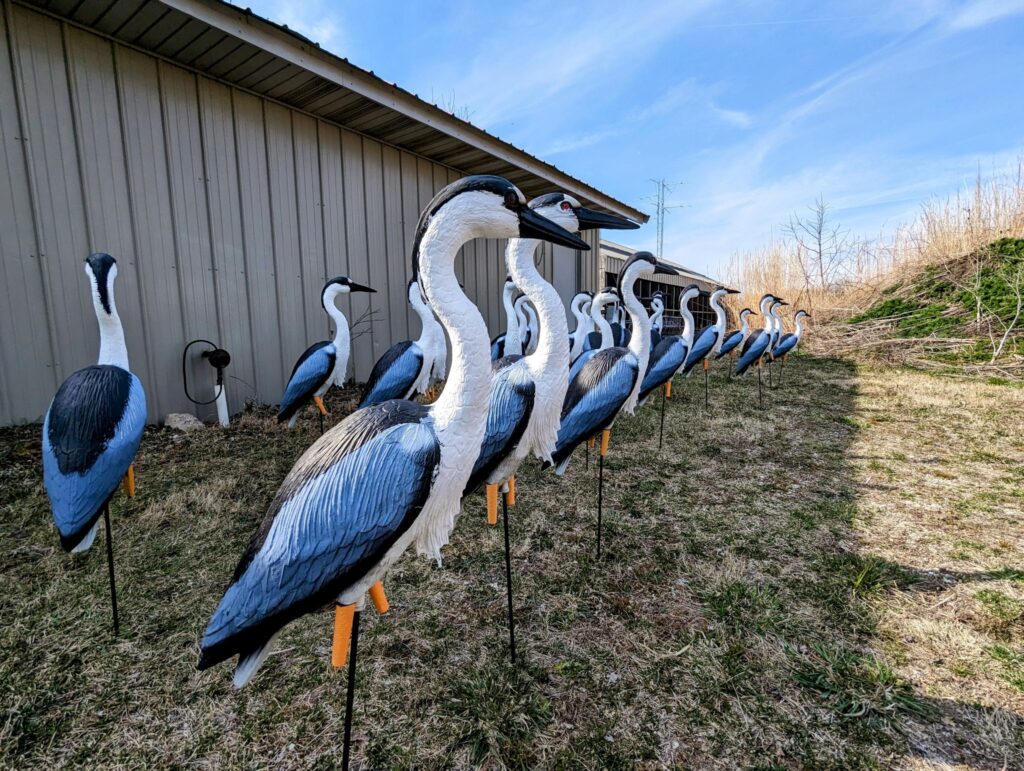
BCNH decoys lined up ready to be deployed to conspecific attraction sites. 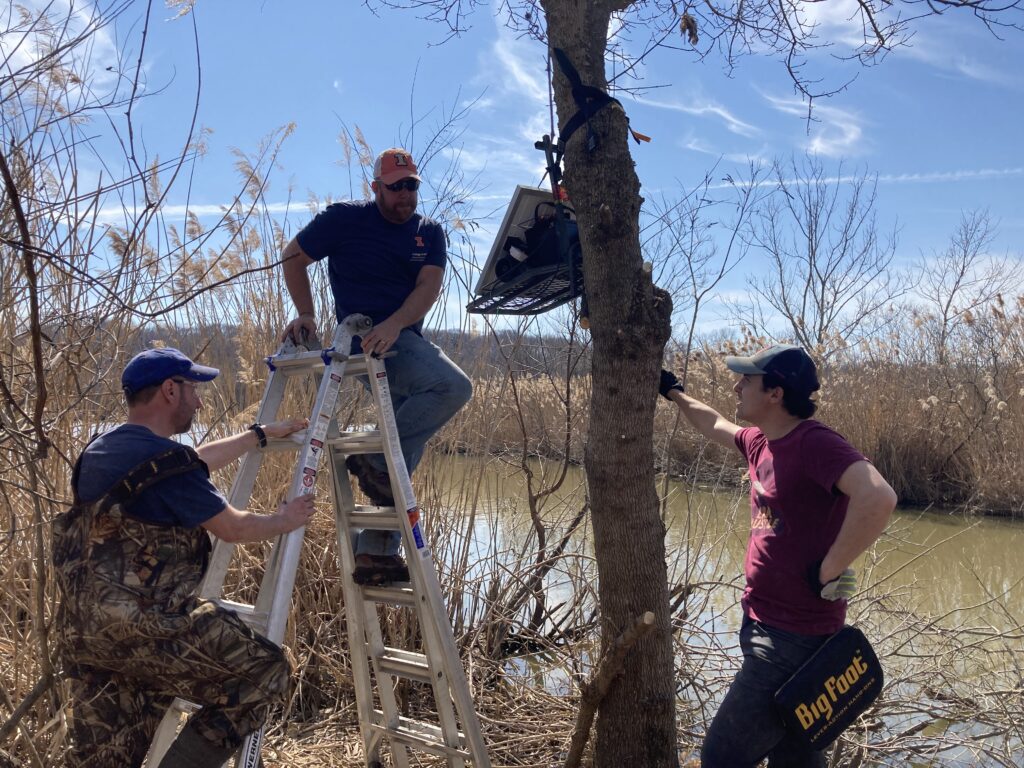
Mike Ward, Mike Avara, and Ian Souza-Cole place audio playback equipment for conspecific cues. 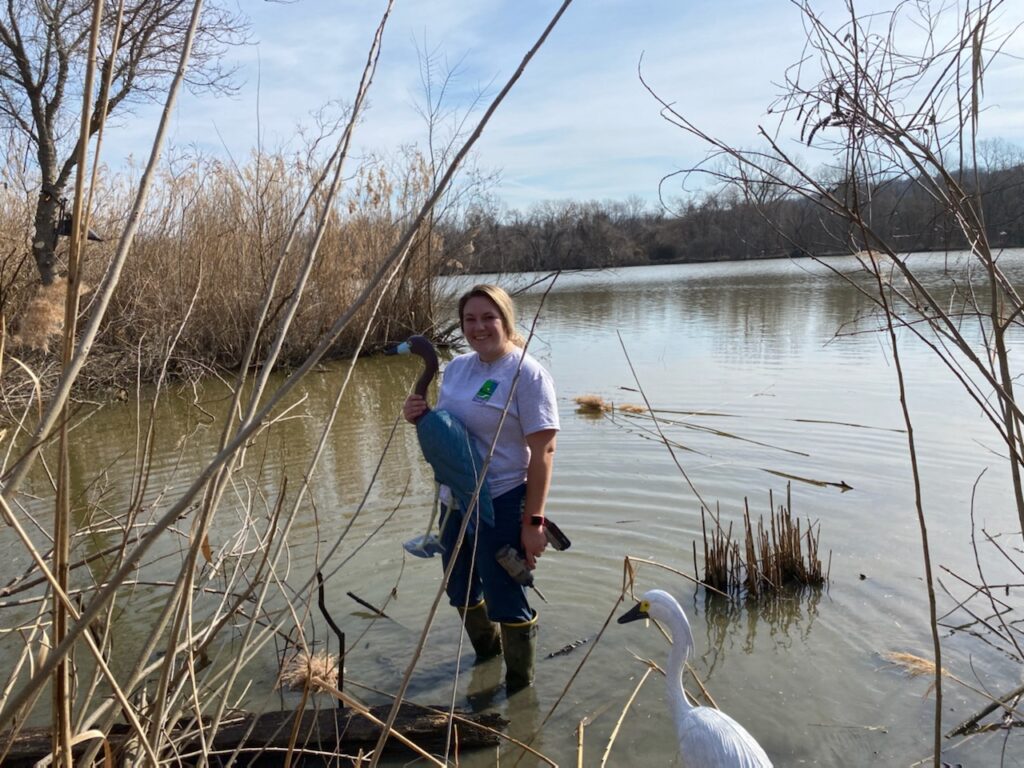
Carson McNamara of IDNR helps place Snowy Egrets and Little Blue Herons at Frank Holton State Park.
Movement and Urban Population Health
We are also working with our partners to study the movement ecology and urban habitat use of BCNH currently nesting at the Lincoln Park Zoo. In 2023, we successfully banded 16 BCNH and equipped 7 birds with satellite transmitter “backpacks” that collect GPS locations at regular intervals. This data will provide information about the birds’ daily movements across Chicago and track birds on their migration to their wintering grounds this fall. We also collected feather samples to measure birds’ heavy metal exposure, which will provide key information about the population’s health and quality of foraging grounds. This information will help guide conservation efforts for this state-endangered species within Illinois, and beyond.
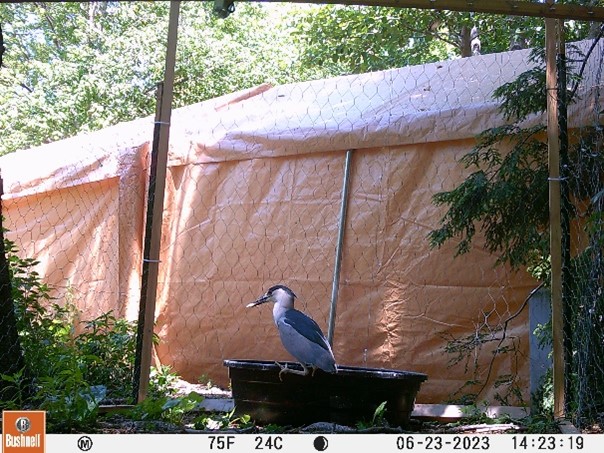
A BCNH grabs a fish before being trapped. 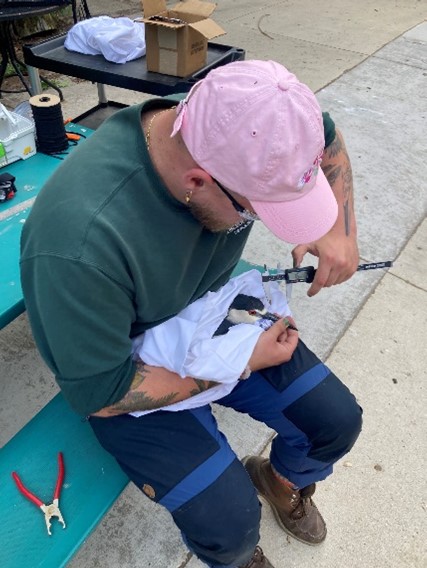
Henry Adams with Lincoln Park Zoo Urban Wildlife Initiative bands a BCNH. 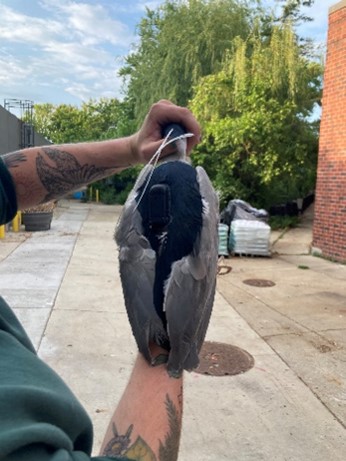
Birds were fitted with GSM transmitters that upload GPS location data to the cellular network. 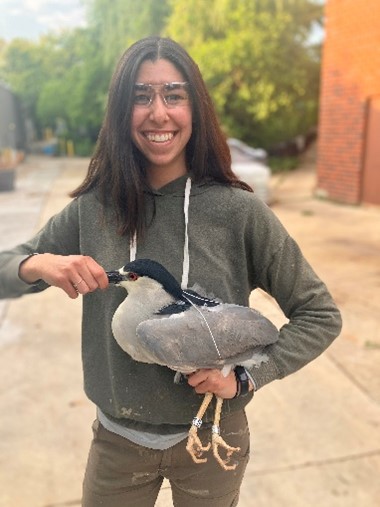
Sarah Slayton with UIUC holds a tagged bird ready for release.
Get Involved
Please keep an eye out for BCNH throughout the Chicago area, and follow this link to report any heron sightings: https://arcg.is/0vKHPW0. If you spot a banded bird, please look closely at its left leg for an alphanumeric tag (e.g. A23) and include it in your report!
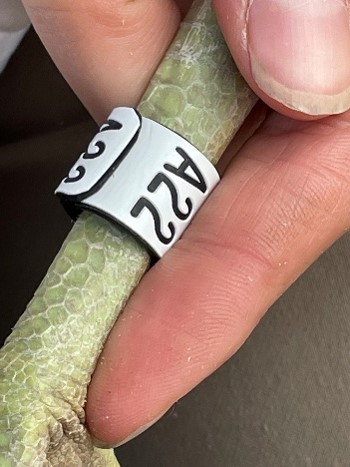
Media
- Illinois Audubon: BCNH Project
- Chicago Audubon: Endangered Black-crowned Night-heron – You Can Help!
- The Chicago Black-crowned Night Heron Facebook Group
- Backpacks for Conservation: an update on Chicago’s Black-crowned Night-herons
- Lincoln Park Zoo: 2023 Black-Crowned Night Heron Field Log
- WTTW: Endangered Black-Crowned Night Herons Are Thriving in Chicago. Researchers Want to Know Why
- Outdoor Illinois Journal: Chicago’s Urban Heron Story: A Natural Marvel in the Heart of the City; A Hope for the Future?